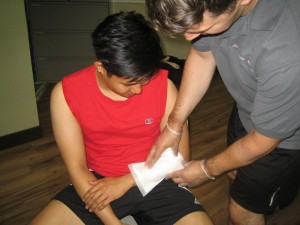Almost all of us end up with wounds at some point in our lives. Most cases of cuts are minor but it is vital that you know how to care for one. Cuts can be managed by cleaning with water and soap and the application of a clean bandage. You can even apply an antibiotic ointment to prevent infection from developing. Remember that cut must be properly cleaned so that the risk for infection is reduced.
If the treatment for cuts is delayed, a minor cut will accumulate enough bacteria to trigger a serious infection and increase the risk for a noticeable scar formation. Puncture wounds might not appear serious but since bacteria and debris are embedded deep into the tissues, consulting a doctor is needed for proper treatment of the wound. Additionally, antibiotics or a tetanus shot might be needed.
When to seek medical care

It is vital to consult a doctor or bring the individual to a healthcare facility if the following are present:
- Deep or long cuts that require stitches
- Cuts that occur over a joint such as the elbow or knee
- Cuts that might disrupt with the functionality of a body part such as the lips or eyelid
- Cuts from a human or animal bite
- Cuts over a possible damaged bone
- Cuts that involves the removal of all skin layers such as slicing off a tip of a finger or one of the toes
- Cuts caused by metal objects or puncture wounds
- Cuts that are accompanied by issues with sensation or movement or increasing pain
- Cuts with signs of infection such as swelling, fever, redness, foul smell and drainage of pus
- Deep, gaping or jagged wounds
- Involves damaged underlying tendons, nerves or joints
- Presence of foreign objects such as glass, dirt, metal or chemicals
When to seek emergency care
An individual must be taken to the emergency department right away for the following:
- There is difficulty in breathing due to the location of the cut in the chest or neck
- The wound continues to bleed after a few minutes of applying firm pressure with a bandage or cloth
- Signs of shock are present
- A cut that amputates or partly amputates an extremity
- Deep wound to the abdominal area that causes moderate to severe pain
- A cut to the eyeball
In most cases, a tetanus shot is required if the individual has not received one within 10 years or if he/she is uncertain of his/her last one. It is important to note that tetanus is a bacterial infection that involves the nervous system and often deadly. Even though many individuals are well aware that a puncture wound can cause tetanus infection, most do not know that the bacteria can also enter the body through a scratch from an animal, small-size pinprick, bug bites, splinters and even burns.
